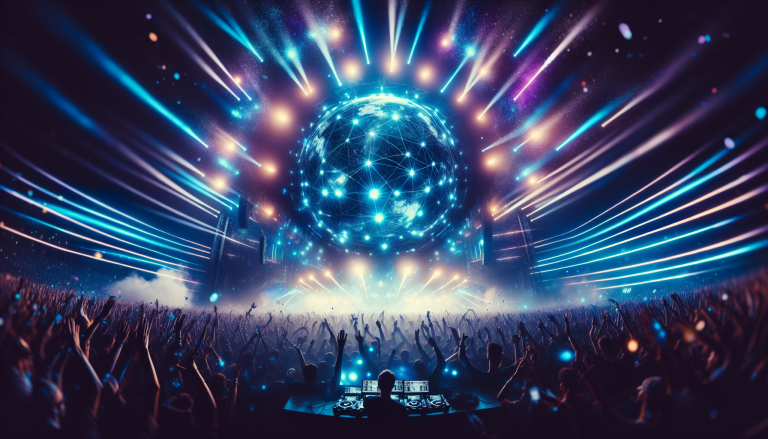The Rhythmic Revolution: Exploring the Electrifying World of EDM
Electronic Dance Music (EDM) isn’t just a genre—it’s a global phenomenon that has transformed the landscape of modern music, turning nightclubs into cathedrals of sound and transforming DJs into modern-day rock stars. From its underground roots to its current status as a billion-dollar industry, EDM represents more than just music—it’s a cultural movement that speaks to a generation hungry for connection, energy, and pure sonic euphoria.
Historical Context: From Basement to Mainstream
The origins of EDM can be traced back to the underground club scenes of Chicago, Detroit, and New York in the late 1970s and early 1980s. Pioneering genres like house music in Chicago and techno in Detroit laid the groundwork for what would become a global musical revolution. Early electronic musicians were rebels and innovators, using synthesizers and drum machines to create entirely new soundscapes that challenged traditional musical boundaries.
“Electronic music is the folk music of the digital age,” says renowned DJ and producer Moby, capturing the transformative spirit of the genre. These early pioneers were creating more than just music—they were constructing entire sonic universes that would eventually captivate millions worldwide.
Genre Description: The Sonic Landscape of EDM
EDM is characterized by its pulsating beats, synthesized sounds, and carefully crafted drops that create moments of pure musical ecstasy. Unlike traditional American music formats, EDM thrives on technological innovation, with producers using complex software and hardware to manipulate sound in ways previously unimaginable.

The genre encompasses multiple sub-genres, each with its unique flavor:
– House: Smooth, rhythmic beats with soulful undertones
– Techno: Hard-hitting, industrial sounds
– Trance: Hypnotic, melodic progressions
– Dubstep: Bass-heavy with dramatic rhythmic shifts
– Progressive House: Layered, evolving soundscapes
Key Artists and Pioneers
The EDM landscape is populated by legendary artists who have transformed the genre:
1. Daft Punk: The French duo who revolutionized electronic music, blending funk, disco, and electronic sounds.
2. Deadmau5: Known for his complex productions and iconic mouse helmet.
3. Calvin Harris: Bridged the gap between EDM and pop music.
4. Skrillex: Popularized the aggressive dubstep sound.
5. David Guetta: Brought EDM to mainstream pop audiences.
These artists didn’t just create music—they created entire cultural experiences, turning music festivals into modern-day tribal gatherings where thousands connect through rhythm and collective energy.
Notable Songs and Albums
Several tracks have become defining moments in EDM history:
– Daft Punk’s “One More Time”: A celebration of musical joy
– Skrillex’s “Scary Monsters and Nice Sprites”: Defined the dubstep explosion
– Swedish House Mafia’s “Don’t You Worry Child”: A anthemic crossover hit
– Avicii’s “Wake Me Up”: Blended EDM with folk and pop sensibilities
Cultural Impact and Global Reach
EDM has transcended musical boundaries, becoming a global language of youth culture. Music festivals like Tomorrowland, Electric Daisy Carnival, and Ultra Music Festival have become massive cultural events, attracting hundreds of thousands of fans from around the world.
The genre has also dramatically influenced other musical styles, with pop, hip-hop, and rock artists incorporating electronic elements into their music. What began as an underground movement has become a multibillion-dollar industry, reshaping how we experience and consume music.
Technological Innovation
EDM’s relationship with technology is symbiotic. Producers are constantly pushing the boundaries of music creation, using advanced software, synthesizers, and live performance technologies. Modern EDM performances are as much about visual spectacle as they are about sound, with elaborate light shows and multimedia experiences.
The Future of EDM
As technology continues to evolve, so will electronic dance music. Virtual reality concerts, AI-generated music, and increasingly sophisticated production techniques promise to take the genre to unprecedented heights.
The spirit of EDM remains unchanged: a celebration of human creativity, technological innovation, and the universal power of rhythm to connect people across cultural and geographical boundaries.
From its humble beginnings in underground clubs to global stadium events, EDM represents more than just a musical genre—it’s a testament to human creativity, technological innovation, and our fundamental desire to connect through sound and movement.
The beat goes on, and with it, the endless possibility of musical evolution.